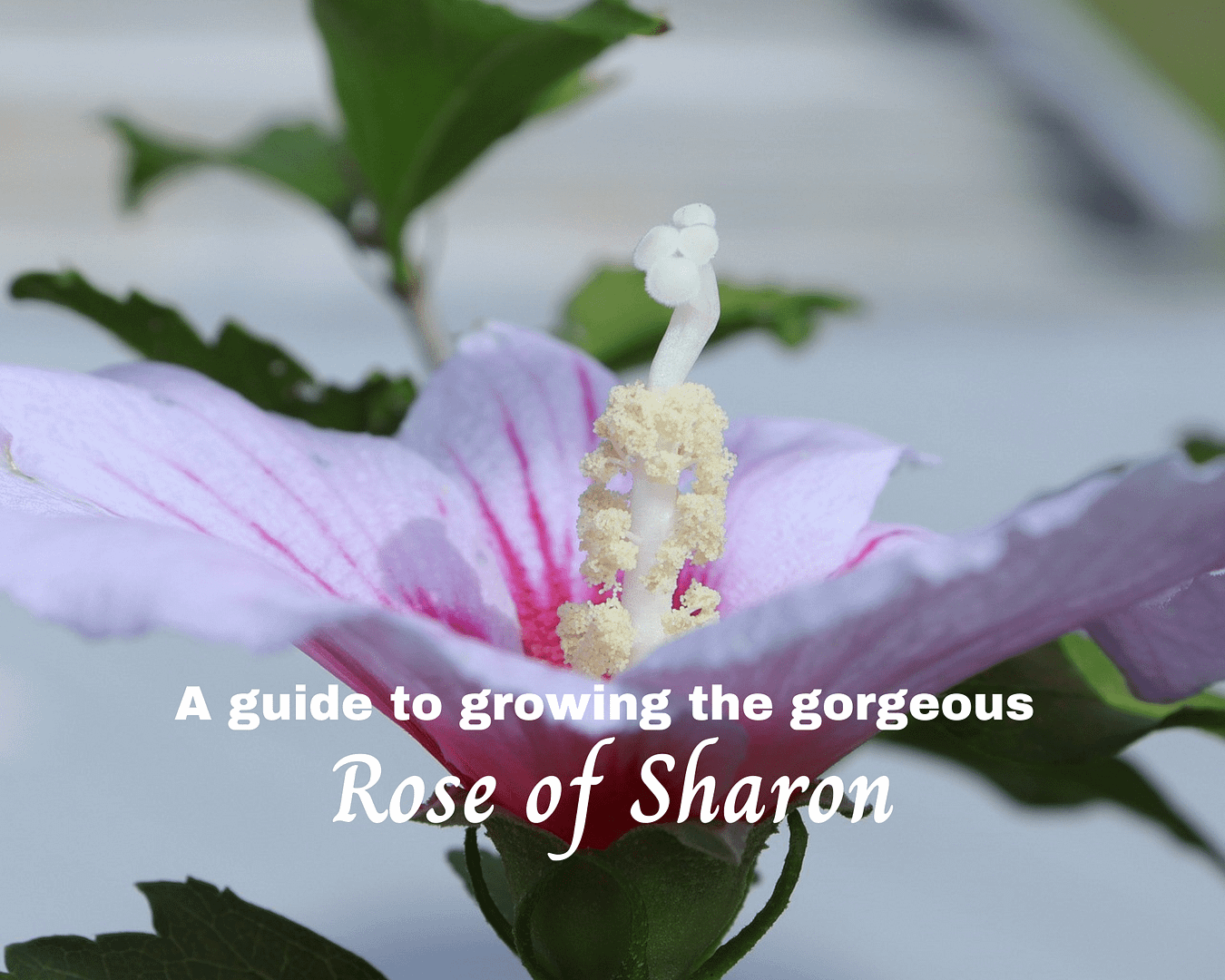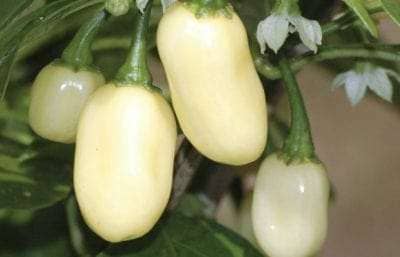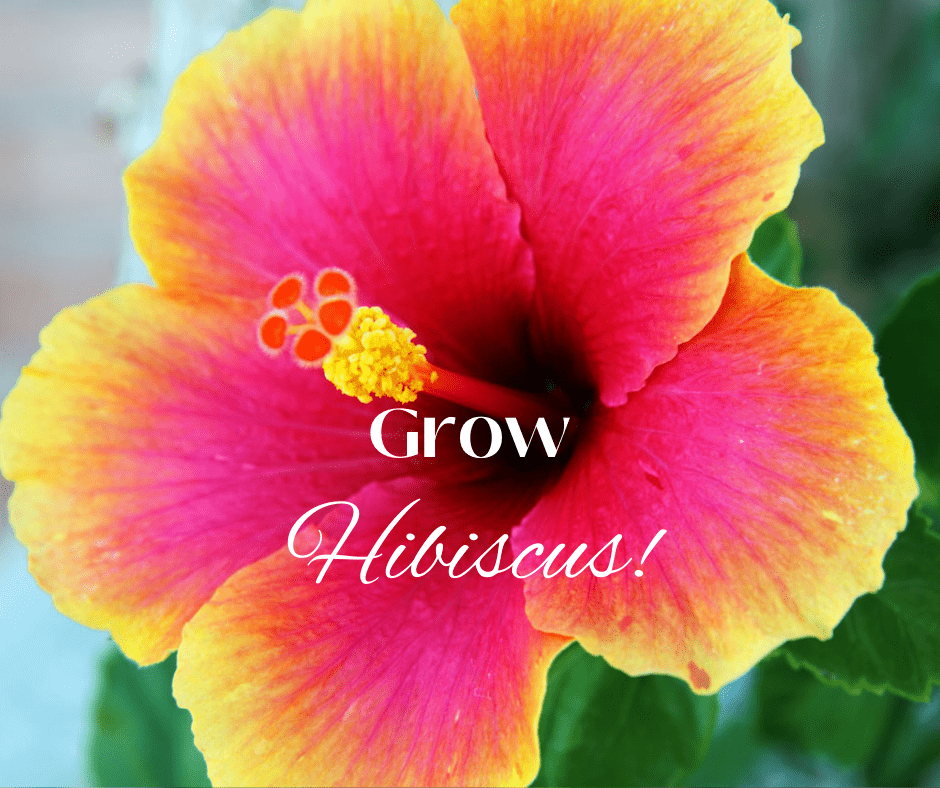This post may contain affiliate links. As an Amazon Associate we earn from qualifying purchases.
Edible flowers have been used in cooking for centuries, adding color, flavor, and a touch of elegance to dishes. Whether you’re a seasoned gardener or a curious foodie, exploring the world of edible flowers can be a fun experience.
Here’s a guide to some popular edible flowers, complete with growing information and tips.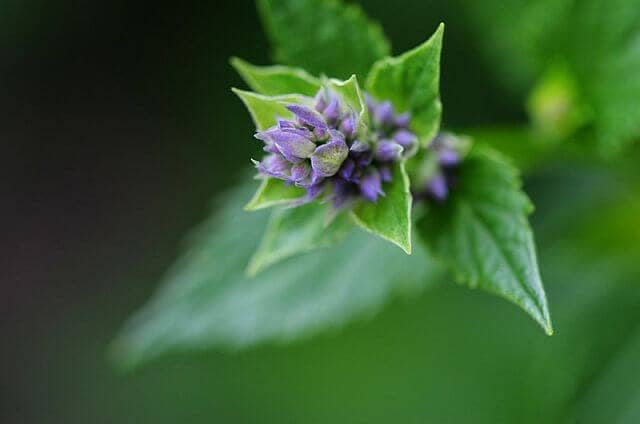
Anise hyssop
Anise hyssop (Agastache foeniculum) is not only a pretty, edible flower, it has a sweet, licorice-like flavor and is a favorite for teas, salads, and desserts. Its vibrant purple flowers also attract bees and butterflies.
- USDA Hardiness Zone: 4-9
- Perennial or Annual: Perennial
- Sun or Shade: Full sun to partial shade
- Watering Needs: Regular watering, especially in dry periods
- Heat Tolerant: Yes
- Cold Tolerant: Yes
- Toxic to Children and Pets: No
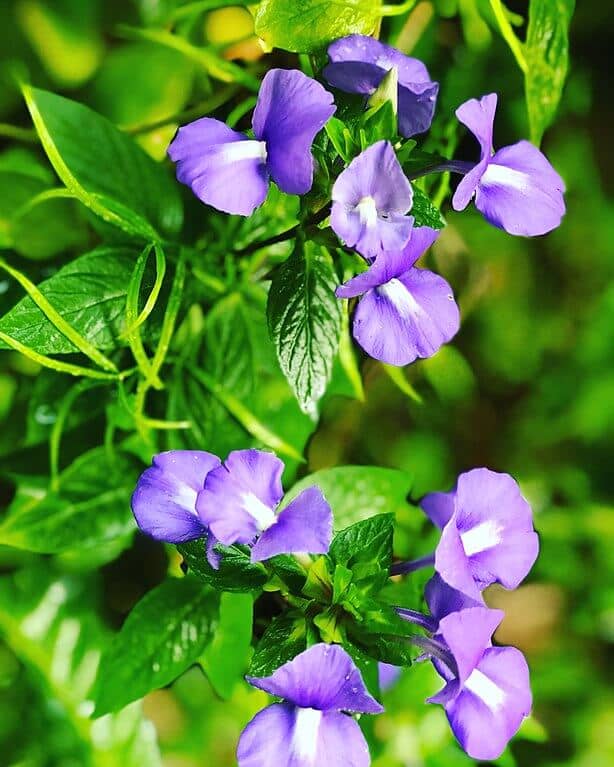
Butterfly pea
Butterfly pea (Clitoria ternatea) flowers are known for their stunning blue color and are often used to color drinks and desserts. When the pH changes, such as with the addition of lemon juice, the color shifts to purple.
- USDA Hardiness Zone: 10-11
- Perennial or Annual: Perennial (often grown as an annual in cooler climates)
- Sun or Shade: Full sun
- Watering Needs: Moderate; keep soil consistently moist
- Heat Tolerant: Yes
- Cold Tolerant: No
- Toxic to Children and Pets: No

Borage
Borage (Borago officinalis) flowers have a light cucumber flavor and are often added to salads, beverages, and garnishes. The bright blue, star-shaped flowers are a beautiful addition to any dish (and garden!).
- USDA Hardiness Zone: 2-11
- Perennial or Annual: Annual
- Sun or Shade: Full sun
- Watering Needs: Regular watering
- Heat Tolerant: Yes
- Cold Tolerant: Yes
- Toxic to Children and Pets: No

Calendula
Calendula (Calendula officinalis), also known as pot marigold, has a peppery taste and is used in salads, soups, and rice dishes. The petals range from yellow to bright orange and add a splash of color to your plate.
- USDA Hardiness Zone: 2-11
- Perennial or Annual: Annual
- Sun or Shade: Full sun
- Watering Needs: Moderate; keep soil moist
- Heat Tolerant: Yes
- Cold Tolerant: Yes
- Toxic to Children and Pets: No

Campanula
Campanula (Campanula latifolia), or bellflower, has a mild, sweet flavor and is often used in salads and as a garnish. The delicate, bell-shaped flowers come in shades of blue, purple, and white.
Not all species of campanula are edible. Find a list of those that are at goodfoodworld.com.
- USDA Hardiness Zone: 3-9
- Perennial or Annual: Perennial
- Sun or Shade: Full sun to partial shade
- Watering Needs: Regular watering, especially in dry periods
- Heat Tolerant: No
- Cold Tolerant: Yes
- Toxic to Children and Pets: No

Chamomile
All species of the chamomile (Chamomile spp.) flower are edible and famous for their apple-like flavor. Two species are commonly used in teas, Matricaria chamomilla and Chamaemelum nobile. Petals can also be added to salads and desserts for a subtle, sweet flavor.
- USDA Hardiness Zone: 3-9
- Perennial or Annual: Annual
- Sun or Shade: Full sun
- Watering Needs: Moderate; prefers well-drained soil
- Heat Tolerant: Yes
- Cold Tolerant: Yes
- Toxic to Children and Pets: No

Citrus tree blossoms
Citrus blossoms, from oranges, lemons, and limes, have a sweet, fragrant flavor. They are often used in desserts, teas, and savory dishes to add a floral note.
- USDA Hardiness Zone: 9-11
- Perennial or Annual: Perennial
- Sun or Shade: Full sun
- Watering Needs: Regular; keep soil evenly moist
- Heat Tolerant: Yes
- Cold Tolerant: No
- Toxic to Children and Pets: No
Learn How to Avoid Citrus Tree Problems

Clover blossoms
Clover (Trifolium spp.) flowers, particularly white clover (Trifolium repens), has a sweet, mild taste. It can be sprinkled on salads or used to make tea, jellies and jams.
Bonus: Clover is a nitrogen fixer so it’s good for the soil.
Caution: alsike clover (Trifolium hybridum) may be toxic. Research is ongoing, but we suggest you stay away from this one.
- USDA Hardiness Zone: 3-10
- Perennial or Annual: Perennial
- Sun or Shade: Full sun to partial shade
- Watering Needs: Low; drought-tolerant once established
- Heat Tolerant: Yes
- Cold Tolerant: Yes
- Toxic to Children and Pets: Just the species listed above under “Caution.”

Daisies
When choosing edible daisies, look for the English daisy (Bellis perennis, the type that grows in lawns.) Stems and flowers are edible. Also check out Shasta daisy (Leucanthemum × superbum) and oxeye daisy (Leucanthemum vulgare).
Daisy petals have a mild, slightly bitter taste and can be used to garnish salads and desserts. They add a cheerful touch to any dish with their bright white and yellow blooms.
And they look adorable decorating the top of a birthday cake!
- USDA Hardiness Zone: 3-10
- Perennial or Annual: Perennial
- Sun or Shade: Full sun to partial shade
- Watering Needs: Regular; prefers well-drained soil
- Heat Tolerant: Yes
- Cold Tolerant: Yes
- Toxic to Children and Pets: No

Gladiolus
Surprised? Yes, gladiolus flowers are edible. “Flowers (anthers removed) have a nondescript flavor (taste vaguely like lettuce) but make lovely receptacles for sweet or savory spreads or mousses. Toss individual petals in salads,” suggest the experts at Teleflora.com.
Then, create a centerpiece with the flowers left over. They are particularly beautiful with their tall spikes of colorful blooms.
- USDA Hardiness Zone: 7-10
- Perennial or Annual: Perennial (often grown as an annual in cooler climates)
- Sun or Shade: Full sun
- Watering Needs: Regular; keep soil moist
- Heat Tolerant: Yes
- Cold Tolerant: No
- Toxic to Children and Pets: No

Hibiscus
Hibiscus flowers have a tart, cranberry-like flavor and are used in teas, salads, and desserts. Hibiscus tea is popular for its refreshing taste, vibrant red color and, according to research, the ability to lower blood pressure.
If you’re interested in the medicinal qualities, skip the tropical plant. You’ll need to grow Hibiscus sabdariffa, commonly known as roselle.
Allow the flowers to remain on the tree for at least 10 days after dying and then dry the calyces and crush them for tea.
The leaves are edible too, by the way.
The flowers of the tropical hibiscus, Hibiscus rosa-sinensis also makes a lovely tea.
Learn How to Grow Roselle.
- USDA Hardiness Zone: 8-11
- Perennial or Annual: Perennial
- Sun or Shade: Full sun
- Watering Needs: Regular; keep soil moist
- Heat Tolerant: Yes
- Cold Tolerant: No
- Toxic to Children and Pets: No
 Lavender
Lavender
English lavender (Lavandula angustifolia) has a sweet, floral flavor with hints of citrus. It is used in a variety of dishes, from desserts to savory meats, and is also popular in beverages and baked goods.
Some species are not recommended for culinary use. These include Spanish lavender (Lavandula stoechas) French lavender (Lavandula dentata), Lavandula lanata (or Spike lavender), Portuguese lavender (Lavandula latifolia) and Lavandin (Lavandula X Intermedia).
Learn more about the different lavenders by checking out How and When to Prune Lavender.
- USDA Hardiness Zone: 5-9
- Perennial or Annual: Perennial
- Sun or Shade: Full sun
- Watering Needs: Low; drought-tolerant
- Heat Tolerant: Yes
- Cold Tolerant: Yes
- Toxic to Children and Pets: No

Marigold
Marigolds are a bit of an oddball in the edible floral world. No two species taste the same. Some have a citrusy, slightly spicy flavor, while others are spicy and still others taste like air; they are flavorless.
Experiment with those in the Tagetes genus. When you find the one you like, put the petals in salads, rice dishes and soups.
- USDA Hardiness Zone: 2-11
- Perennial or Annual: Annual
- Sun or Shade: Full sun
- Watering Needs: Moderate; prefers well-drained soil
- Heat Tolerant: Yes
- Cold Tolerant: Yes
- Toxic to Children and Pets: No

Nasturtium
There are at least 80 species of nasturtium in the Tropaeolum genus. The most commonly grown are T. majus (common nasturtium) and T. minus (dwarf nasturtium).
Nasturtium flowers have a peppery, spicy flavor similar to watercress. They are popular in salads, sandwiches, and as garnishes for a colorful, flavorful touch.
- USDA Hardiness Zone: 9-11
- Perennial or Annual: Annual or perennial, depending on species
- Sun or Shade: Full sun to partial shade
- Watering Needs: Low to moderate; drought-tolerant
- Heat Tolerant: Yes
- Cold Tolerant: No
- Toxic to Children and Pets: No
 Pansy
Pansy
Pansies (Viola × wittrockiana) have a mild, slightly sweet flavor and come in a variety of colors. They are perfect for garnishing salads, desserts, and beverages. They’re actually rather too cute to eat, but tasty too.
- USDA Hardiness Zone: 4-8
- Perennial or Annual: Annual (some varieties can be perennial)
- Sun or Shade: Full sun to partial shade
- Watering Needs: Regular; keep soil moist
- Heat Tolerant: No
- Cold Tolerant: Yes
- Toxic to Children and Pets: No

Roses
We don’t know if this is true, but some rosarians claim that the darker the rose (Rosa spp.), the sweeter tasting the petals. Rumor also has it that roses with the most scent are also more palatable.
Overall, rose petals have a sweet, fragrant flavor and can be used in desserts, jellies, and teas.
- USDA Hardiness Zone: 3-11
- Perennial or Annual: Perennial
- Sun or Shade: Full sun
- Watering Needs: Regular; keep soil moist
- Heat Tolerant: Yes
- Cold Tolerant: Yes
- Toxic to Children and Pets: No

Squash blossoms
If you’ve never tried stuffed, fried squash blossoms, you’d best be getting to growing squash. It’s a real treat.
They have a sweet but mild flavor that you won’t soon forget.
Learn How to Grow Butternut Squash
- USDA Hardiness Zone: 3-11
- Perennial or Annual: Annual
- Sun or Shade: Full sun
- Watering Needs: 1 to 2 inches per week, more when it’s extra hot outside
- Heat Tolerant: Yes
- Cold Tolerant: No
- Toxic to Children and Pets: No

Sunflowers
We’re all familiar with the edible seeds of the sunflower (Helianthus annuus), but there’s more to the plant than seeds.
Sunflower petals are edible as well and have a slightly bitter taste. That doesn’t keep intrepid chefs from tossing them into salads and as a garnish.
The buds can also be steamed and eaten like artichokes. Oh, and we know of a gardener who makes sunflower flour to bake with!
- USDA Hardiness Zone: 2-11
- Perennial or Annual: Annual
- Sun or Shade: Full sun
- Watering Needs: Moderate; drought-tolerant once established
- Heat Tolerant: Yes
- Cold Tolerant: Yes
- Toxic to Children and Pets: No

Violets
Violets have a sweet, floral flavor and are commonly used in salads, desserts, and as garnishes. They add a lovely color and delicate taste to any dish.
- USDA Hardiness Zone: 4-9
- Perennial or Annual: Perennial or annual, depending on species
- Sun or Shade: Full sun to partial shade
- Watering Needs: Moderate; keep soil moist
- Heat Tolerant: No
- Cold Tolerant: Yes
- Toxic to Children and Pets: No
Exploring the world of edible flowers can add a new dimension to your gardening plans. Always ensure that the flowers you use are free from pesticides and are indeed edible varieties.





